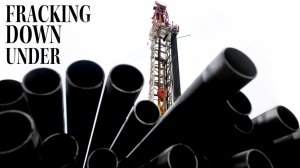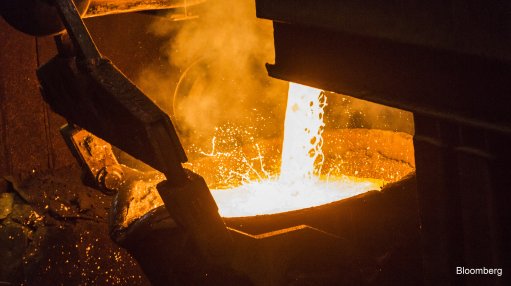Aus states, territories convinced hydraulic fracturing a viable option
While Australia is estimated to host more than 800-trillion cubic feet of gas resources, the rapidly expanding gas industry is facing a significant battle in exploiting some of these resources.
During the three months to March, Australian gas production reached 15-billion cubic metres, and for the full 2013/14 financial year, this production is expected to be around 62.1- billion cubic metres. Production for the 2014/15 financial year will grow further as the first of seven liquefied natural gas (LNG) projects under construction in Australia, begin operations.
Currently, LNG, oil and gas projects have the highest combined values of projects at the publicly announced stage, the Bureau of Resource and Energy Economics (BREE) reported earlier this year.
The eight projects that currently make up those at the publicly announced stage total an investment of between A$28.5-billion and A$30.5-billion, BREE reports. A further eight projects are currently at feasibility stage, and will see a further investment of some A$43- billion into the sector.
At the committed stage, some 14 LNG, oil and gas projects make up a combined investment of A$197-billion, and account for 86% of Australia’s total committed investment in the resources sector.
Despite the obvious financial benefits of the gas industry for Australia, gas projects in certain regions of the country are still faced with severe resistance, specifically the coal seam gas (CSG) and, less notably, the shale gas industry, which wishes to employ hydraulic fracturing, or fracking, technology to exploit the gas resources.
Fracking involves the high-pressure injection of sand, water and chemicals into gas-bearing rock, which essentially fractures the rock, allowing the gas to flow to the surface of the well, after which it can be harnessed.
The use of fracking has caused much controversy in the country and has spawned several lobbying groups, including the Lock the Gate Alliance.
Antifracking lobbying groups have raised concerns that the fracking process will contaminate underground aquifers.
However, scientific evidence has established that fracking can be a ‘safe’ technology, with UK government scientific adviser Professor Mark Walport pointing out that the risks involved in fracking are manageable.
Walport told The Guardian that, while the evidence from scientists and engineers shows that fracking is safe, science is only one part of a much larger debate.
“It’s not up to scientists. It’s a political decision and a societal decision. One thing we cannot do is turn off our power supply. Advanced societies depend on it,” Walport said.
Some Australian politicians are paying heed to the lobbying body fears, with both the Northern Territory and Victorian governments hesitant to set foot into the arena.
In February, the Northern Territory government announced its intent to launch an inquiry into the merits of fracking, as well as its potential effects on the environment.
Environmental Minister Peter Chandler conceded that fracking could be the key to unlocking huge economic benefits for the Northern Territory’s oil and gas industry, but said that community members were “unsure” about the potential impacts that this process could have on the environment.
“The inquiry aims to separate the actual environmental risks from the perceived risks and clear up some of the claims about hydraulic fracturing that have caused significant public concern,” the Minister said, adding that recommendations of effective methods for mitigating actual environmental impacts would result from the inquiry.
Victoria in May launched a community and stakeholder engagement programme that enabled interested parties to discuss the possible future development of an onshore natural gas industry for the region, including the development of tight, shale and CSG resources.
“Our intent is to gain a deeper understanding about the issues and range of views across the community, particularly in the rural and regional communities where commercially viable sources of onshore natural gas might occur,” Victorian Energy and Resource Minister Russell Northe said.
However, while these discussions rage, the Victorian government has placed all work plan approvals for onshore gas exploration on hold.
The New South Wales government has also decided to freeze all petroleum exploration licence applications until September and to audit existing petroleum exploration licences as it reconsidered its options for CSG in the state.
The state government previously placed a number of restrictions on further CSG developments, introducing an exclusion zone to cover critical industry clusters, residential zones and seven rural villages and future growth areas.
At the time of announcing the moratorium, the state’s Resources and Energy Minister, Anthony Roberts, said that, under the Petroleum (Onshore) Act, a petroleum title could be cancelled on a number of grounds, including contravention of conditions, failure to use the title area in good faith for the purpose for which the title was granted, and for contraventions of the Act.
The state government has taken its review of these licences seriously and, in May, suspended the drilling licence of ASX-listed Metgasco at the company’s Rosella licence, saying it had not fulfilled its exploration licence conditions.
Roberts said at the time of the suspension that the state’s Office of Coal Seam Gas (OCSG) suspended the licence, based on the fact that the company had not undertaken “genuine and effective” consultations with the community, as required by its licence conditions.
Metgasco has continued to vehemently deny the allegations, lodging a request for a judicial review in the Supreme Court, claiming that the OCSG had not been justified in suspending the licence.
The suspension of Metgasco’s exploration rights over the Rosella project has proven to be a point of concern for the Australian Petroleum Production and Exploration Association (Appea), which warned that it set an alarming precedent for resource development in New South Wales.
The industry body warned that the state government’s decision suggested that protest action against a particular resource project could now be considered by government and regulators to be a proxy for ‘ineffective’ consultation, and therefore grounds for licence suspension.
Appea warned that the Metgasco suspension could raise concerns for any resource project in New South Wales and reduce certainty for shareholders and employees.
While the debate rages in the other states and territories, both of Australia’s largest resource states, Western Australia and Queensland, have maintained their optimism on the fracking process.
The Western Australian Department of Mines and Petroleum recently cleared junior Buru Energy to start fracking operations at its Laurel Formation tight gas deposit, after Environment Minister Albert Jacob had upheld a decision from the Environmental Protection Authority.
Jacob has muted calls to follow in the footsteps of the other states and place a ban on fracking, saying Western Australia had no plans on instituting a moratorium on fracking.
Queensland was also placing a lot of stock by its LNG and gas industry, with the industry spending some A$70-billion on CSG-to-LNG projects, with first exports planned for later this year.
The state has expended significant energy on moderating its CSG industry and, in June this year, introduced the Mineral and Energy Resources Bill 2014 as the first step in creating a single, common resources Act for the mining, petroleum and gas, greenhouse-gas storage and geothermal energy sectors.
The Bill, which forms part of the Modernising Queensland’s Resources Acts initiative, was aimed at introducing a new framework for managing the state’s overlapping coal and petroleum tenures to facilitate co-existence of coal mining and CSG industries, while also expanding the Land Court’s jurisdiction to hear conduct matters when considering conduct and compensation agreements.
The Queensland Resources Council has said that the policy reform would boost the contribution of the resources sector to the state’s economy, adding that the development of a new overlapping tenure framework for coal and CSG unlocked valuable resources by resolving competing development rights.
Comments
Press Office
Announcements
What's On
Subscribe to improve your user experience...
Option 1 (equivalent of R125 a month):
Receive a weekly copy of Creamer Media's Engineering News & Mining Weekly magazine
(print copy for those in South Africa and e-magazine for those outside of South Africa)
Receive daily email newsletters
Access to full search results
Access archive of magazine back copies
Access to Projects in Progress
Access to ONE Research Report of your choice in PDF format
Option 2 (equivalent of R375 a month):
All benefits from Option 1
PLUS
Access to Creamer Media's Research Channel Africa for ALL Research Reports, in PDF format, on various industrial and mining sectors
including Electricity; Water; Energy Transition; Hydrogen; Roads, Rail and Ports; Coal; Gold; Platinum; Battery Metals; etc.
Already a subscriber?
Forgotten your password?
Receive weekly copy of Creamer Media's Engineering News & Mining Weekly magazine (print copy for those in South Africa and e-magazine for those outside of South Africa)
➕
Recieve daily email newsletters
➕
Access to full search results
➕
Access archive of magazine back copies
➕
Access to Projects in Progress
➕
Access to ONE Research Report of your choice in PDF format
RESEARCH CHANNEL AFRICA
R4500 (equivalent of R375 a month)
SUBSCRIBEAll benefits from Option 1
➕
Access to Creamer Media's Research Channel Africa for ALL Research Reports on various industrial and mining sectors, in PDF format, including on:
Electricity
➕
Water
➕
Energy Transition
➕
Hydrogen
➕
Roads, Rail and Ports
➕
Coal
➕
Gold
➕
Platinum
➕
Battery Metals
➕
etc.
Receive all benefits from Option 1 or Option 2 delivered to numerous people at your company
➕
Multiple User names and Passwords for simultaneous log-ins
➕
Intranet integration access to all in your organisation





















